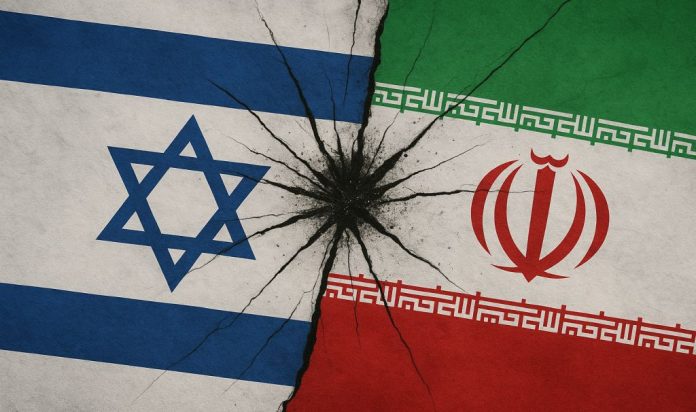Our Terms & Conditions | Our Privacy Policy
Why the Israel-Iran Escalation Imperils Global Shipping

(www.MaritimeCyprus.com) When Israeli jets reportedly struck targets inside Iran on a tense Friday morning, the reverberations traveled faster than the speed of sound—through oil futures, geopolitical flashpoints, and perhaps most disruptively, into the shipping lanes of the Persian Gulf.
The world’s attention is rightly focused on the risk of regional escalation. But what is less visible, though no less consequential, is the risk this confrontation poses to one of the most critical arteries of global commerce: the Strait of Hormuz. Roughly one-third of all seaborne oil and a significant portion of liquefied natural gas (LNG) pass through this narrow, 21-mile-wide waterway daily. It is, in effect, the jugular vein of the modern energy economy.
Red Alert in Blue Waters
Though ships continue to flow as of this writing, they do so under an increasingly dark cloud. Insurers have already raised war-risk premiums on vessels entering the Gulf. Charterers are pressing for escalator clauses in freight contracts. Maritime operators are reviewing rerouting protocols—an expensive proposition that can double voyage lengths and spike fuel consumption.
The military calculus is equally precarious. Iran has long threatened to close Hormuz in response to existential threats. Though a full closure remains unlikely, Iran doesn’t need to seal it off to cause disruption. A single mine, drone, or anti-ship missile incident could prompt insurers to blacklist the region, sending tanker traffic around the Cape of Good Hope.
This is not theoretical. The 2019 attacks on tankers in the Gulf of Oman, widely attributed to Iranian proxies, temporarily disrupted flows and prompted a spike in Brent crude. Then, naval escorts mitigated panic. Today, with the Red Sea already compromised by Houthi attacks, the West’s capacity to guarantee maritime security is stretched thin.
Maritime Economics of a Missile
Markets are responding to this uncertainty. Brent crude prices spiked nearly 6% following Israel’s strike, not because of direct supply loss, but due to elevated risk premiums. Shipping costs are poised to rise more sharply. War-risk insurance premiums, once negligible, could now exceed 0.5% of vessel value per voyage. For a VLCC (Very Large Crude Carrier), that’s hundreds of thousands of dollars per trip.
The rerouting options are equally expensive. A diversion around the Cape of Good Hope adds approximately 6,000 nautical miles and up to 14 days of transit time. Fuel and crew costs rise accordingly, not to mention congestion risks at alternate ports and canals.
Strategic Repercussions
1. Energy Security Shake-up:
Gulf producers such as Saudi Arabia, the UAE, and Qatar may accelerate investments in overland or bypass infrastructure. The UAE’s Habshan–Fujairah pipeline already serves as a partial bypass to Hormuz, but it lacks sufficient scale to replace maritime exports.
2. Supply Chain Redundancy:
Shipping lines may diversify their risk by building redundancy into their routing protocols. That, however, comes at a cost—and in a climate where consumers and policymakers alike are battling inflationary pressures, there’s little appetite for more expensive shipping.
3. Naval Coordination Revisited:
The EMASoH (European Maritime Awareness in the Strait of Hormuz) initiative may take on renewed importance. However, greater transatlantic coordination will be required if naval escorts and intelligence sharing are to protect the sheer volume of maritime commerce at stake.
The Hormuz Hypothetical
The scariest scenario isn’t closure—it’s ambiguity. If Iran creates just enough tension to deter shipping without triggering outright war, the result could be a long-term chilling effect on Gulf traffic. Unlike a declared war, which ends eventually, a prolonged “grey zone” conflict could erode investor confidence in regional infrastructure and drain naval resources globally.
Global Ripple Effects
This crisis coincides with a moment of vulnerability. The Suez Canal remains congested due to Red Sea hostilities. The Panama Canal, facing drought-driven restrictions, has lost some of its east-west reliability. The world’s chokepoints are under siege, and there is little slack in the system.
In a world dependent on just-in-time delivery, with oil, LNG, grains, and critical minerals transiting narrow maritime corridors, a single flashpoint like Hormuz holds systemic importance. The market may price the risk in barrels and basis points, but the strategic cost could be far greater.
Conclusion: A Call for Preemptive Stability
Israel’s military calculus may be defensive. Iran’s response, if it comes, may be proportional. But the Strait of Hormuz doesn’t respond to intentions—it responds to actions. Even one miscalculation could cost the global economy billions and unravel supply chains just beginning to stabilize post-pandemic.
Shipping, long the invisible hand of globalization, is now at the forefront of geopolitical vulnerability. It is time governments, navies, and markets treated it as such.
Images are for reference only.Images and contents gathered automatic from google or 3rd party sources.All rights on the images and contents are with their legal original owners.



Comments are closed.